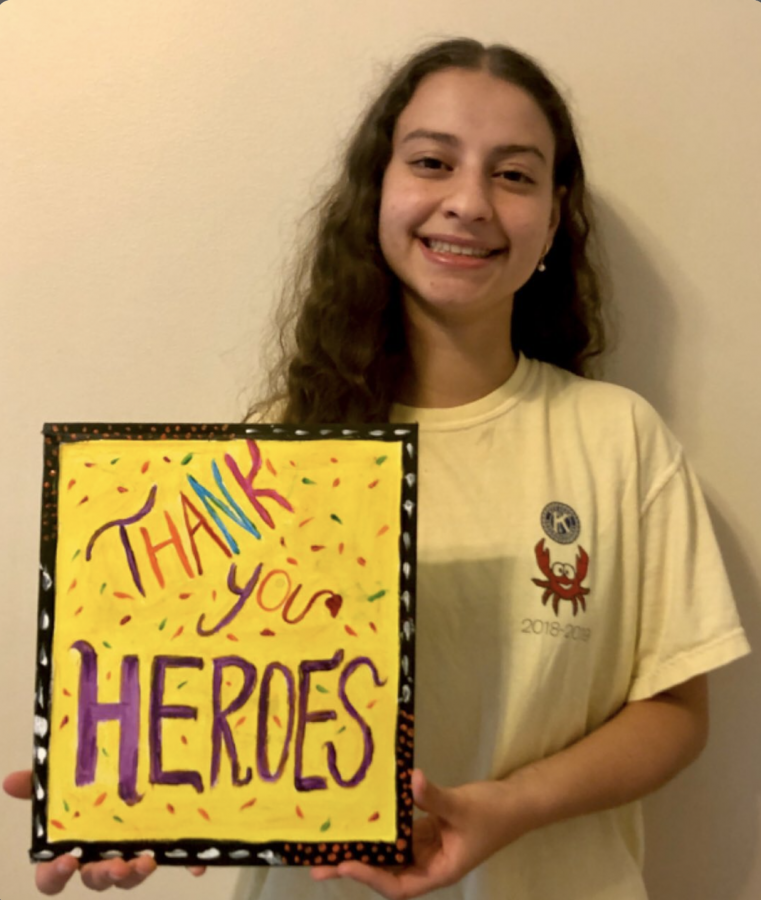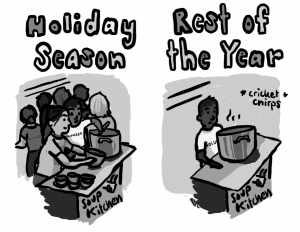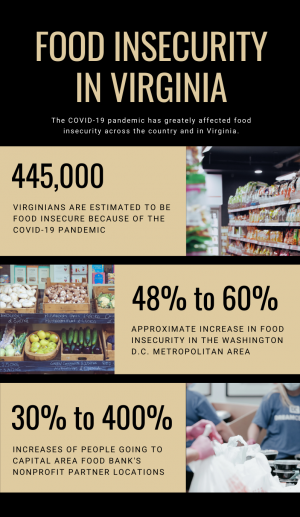Pandemic changes volunteering in communities
photo contributed by Sara Awad
Painting made by Sara Awad, president of Key Club, for essential workers during COVID-19.
November 26, 2020
With the pandemic quarantining people for months now, the coronavirus has changed the way volunteering works as the world continues to meet greater needs and support.
Many students participate in volunteering activities to connect with the community and promote leadership and awareness.
“It can help yourself and your community via making bonds between you and your neighbors so you aren’t alone and people know they are supported,” freshman Lorelei Ketzle said.
It is also scientifically proven that giving back to others can benefit volunteers both mentally and physically. According to HelpGuide, studies have found that those who volunteer have a lower mortality rate than those who do not. After measuring hormones and brain activity of volunteers, it was also found that being helpful to others delivers immense pleasure.
“It gives you a sense of pride, while also helping those less fortunate than yourself. I know that sounds kind of selfish, seeing as how you do get something out of it,” English teacher Andrew Wax said. “Everyone needs help at one time or another, and if you’re able to provide help to others, you should – it’s kind of like returning the favor in a way.”
COVID-19 has canceled global service programs and made volunteering more individual and less social. It is a challenge for organizations to constantly come up with innovative new ideas for safe, distanced volunteering and manage the limitation for in-person volunteering.
“More broadly, the types of volunteer activities that are most needed have focused more narrowly during the COVID-19 health emergency,” CEO of Volunteer Fairfax Steve Mutty said. “They are focused more on meeting basic human needs such as food, shelter and mental health services.”
There are still ways to volunteer but they differ from the ways before the pandemic. According to AmeriCorps, some ways to volunteer at this time are to donate to food banks, deliver meals and groceries, help a school, give blood, become a medical volunteer, donate medical equipment and supplies and volunteer from home.
“I would think that during this time, the best way to volunteer is to first ensure your own safety and social distancing, then to reach out to local shelters, retirement communities, churches, boy scout troops and schools to see if you could be of assistance in some way,” Wax said.
There are also several clubs in schools that provide volunteering opportunities to students. For example, Key Club is a Chantilly High School club that specifies volunteering.
“Being the President of Key Club, I am constantly searching for various service opportunities to provide not only to my peers surrounding me but in which I can participate too,” President of Key Club Sarah Awad said. “In doing so, I decided to write up different prompts, such that the members can share the volunteer opportunities we’ve provided, whether it be designing a thank you video for essential workers to creating masks!”
Although many people are concerned about possibly catching COVID-19 while volunteering, some people are also prompted to volunteer during this time.
Although many people are concerned about possibly catching COVID-19 while volunteering, some people are also prompted to volunteer during this time.
“The short answer is that’s what human nature causes us to do,” Mutty said “When we watch the news and see more people suffering, we tend to want to do something to relieve that suffering, so we volunteer.”





